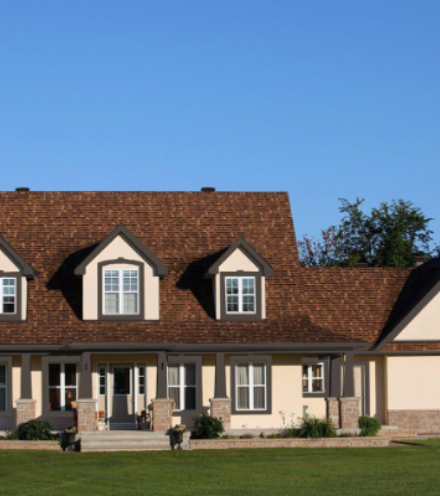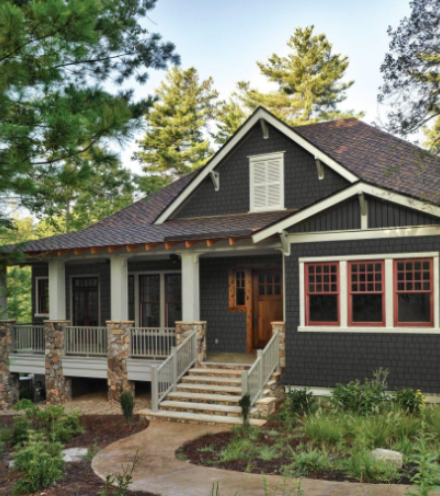
Many homeowners are often on the lookout for low maintenance materials to use on their homes. This is particularly true of areas like siding, which tend to need a lot of work over the years to keep the area clean and looking great. For many homeowners, vinyl siding can therefore look like an attractive and low maintenance alternative to wood siding. After all, vinyl doesn’t peel or chip and it won’t require scraping and painting every few years. Unfortunately, there are several major problems with vinyl siding that aren’t as well-known as its more positive attributes are. Before you reside your home, make sure you understand the drawbacks of vinyl to help make the right decision for your home.
1. Appearance
While it’s true that vinyl siding has come a long way from when it was first introduced, coming a range of different colors and styles, the fact remains that it is still a plastic product, and looks it. Vinyl does not have the same look and texture of real wood, even from a distance. Because it’s molded, if not properly installed you can see the areas where it bends or overlaps the next board pretty clearly, which can detract from the curb appeal of the home. Worst still, it’s not as low-maintenance as it seems, and over time can develop cracks and holes that will make the property look rundown.
2. Sustainability
Sustainability is an important feature for many homeowners and builders today. You want to ensure that whatever you put in or on your home will be good for you and for the environment. While some vinyl siding manufacturers do use some recycled material, most vinyl is not considered a green or sustainable product. Worse still, if you ever need to replace your siding, there are very few places that will accept vinyl siding for recycling, meaning that the plastic will end up in a landfill, contaminating its surroundings as it eventually breaks down.
3. Warping
While it’s true that vinyl doesn’t peel or chip, it does warp some in hot temperatures. Therefore, installing vinyl siding on a home that sees hot summers is not the best idea, as it will lead to the siding changing shape after a few years. And while you can replace those areas that have warped, the same issue will continue to happen again and again unless you also install some form of shade for your home. This can be an issue in desert areas where trees and other cover may not grow well and the summer temperatures get up high enough to melt your siding.
4. Cracking
Vinyl siding has other issues in cold climates as well. When the vinyl gets cold enough, any impact against it will cause it to fracture or crack. Some of these cracks may not be noticeable unless you get up close, but others may result in large pieces of the siding coming away in the form of a hole. This in turn allows moisture to infiltrate through the siding, which can lead to issues such as wood rot, mold, and mildew beneath the siding where it will be hidden from view until it’s too late.
5. Melting in Cold Climates
While most homeowners who experience melting of their siding live in hot climates, there have also been reported cases of the siding melting in cold climates as well. This is because most people who live in cold climates will invest in insulated glass windows. The insulation bends the way that light passes through the glass, a little like a magnifying glass. If your neighbor has insulated windows, and you have vinyl siding, your neighbor’s windows could reflect the light back onto your home in a way that causes your siding to melt even on the coldest of days.
6. Moisture Problems
Vinyl siding is itself water resistant, and when it’s installed without backing, it can act as a natural rainscreen, allowing water to drain out from behind it. Unfortunately, many people install it with a foam backing, which then ends up trapping the moisture behind the siding, where it has no place to go. Because the vinyl itself is unaffected, you may not notice water infiltration or the issues that it causes – rot, mold, and mildew – until it’s too late.
Make a Better Choice
Vinyl siding is not nearly as low maintenance or attractive as it first appears. There are other, truly low maintenance materials on the market, such as fiber cement, that can give you the look and durability you’re after without these issues. Make a better choice for your home, and stay informed about what materials will be best to use.




